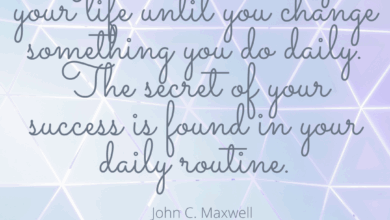Understanding the benefits of regular meditation

Ever feel like your brain is a browser with 50 tabs open? Constantly switching between tasks, worrying about the future, or replaying the past? You’re not alone. Life moves fast. But what if there was a simple way to slow things down, reduce stress, and actually enjoy the present moment? That’s where mindfulness comes in. It’s not about emptying your mind – it’s about learning to observe your thoughts and feelings without getting carried away by them. This article will explore the incredible benefits of regular meditation and how you can easily practice mindfulness in your everyday life, even if you only have a few minutes. We’ll cover everything from the science-backed benefits to practical techniques you can start using today to cultivate a more peaceful and focused mind. It’s about finding a little bit of calm amidst the chaos.
Key Takeaways
- Regular meditation and mindfulness can significantly reduce stress and anxiety.
- Practicing mindfulness improves focus and concentration, boosting productivity.
- Mindfulness can enhance self-awareness, leading to better emotional regulation.
- Simple mindfulness exercises can be incorporated into daily routines, like eating or walking.
- Mindfulness isn’t about stopping thoughts, but about observing them without judgment.
- Consistent practice is key to experiencing the full benefits of mindfulness.
- Mindfulness can improve sleep quality and overall well-being.
What Exactly Is Mindfulness?
At its core, mindfulness is paying attention – on purpose, in the present moment, and without judgment. It’s about noticing your thoughts, feelings, and sensations as they arise, without getting caught up in them. Think of it like watching clouds drift by in the sky. You see them, acknowledge their shape and form, but you don’t try to hold onto them or change them. They simply come and go. This is different than our usual habit of getting lost in thought, worrying about the future, or dwelling on the past. Many people confuse mindfulness with meditation, but meditation is actually a tool to cultivate mindfulness. You can practice mindfulness throughout your day, even when you’re not formally meditating.
The Science-Backed Benefits of Meditation
The benefits of meditation aren’t just anecdotal; they’re supported by a growing body of scientific research. Studies have shown that regular meditation can actually change the structure of your brain, strengthening areas associated with attention, emotional regulation, and compassion. For example, research at Harvard Medical School found that meditation can increase gray matter in the hippocampus, the brain region responsible for learning and memory. https://news.harvard.edu/gazette/story/2011/02/eight-weeks-to-a-better-brain/ Beyond brain changes, meditation has been linked to:
- Reduced Stress & Anxiety: Mindfulness helps lower cortisol levels, the hormone associated with stress.
- Improved Focus & Concentration: Regular practice trains your brain to stay present and resist distractions.
- Enhanced Emotional Regulation: Mindfulness allows you to observe your emotions without being overwhelmed by them.
- Lower Blood Pressure: Studies suggest meditation can contribute to cardiovascular health.
- Better Sleep: A calmer mind often leads to more restful sleep.
How to Start a Meditation Practice
The good news is you don’t need any special equipment or training to start meditating. Here’s a simple beginner’s guide:
- Find a Quiet Space: Choose a place where you won’t be disturbed.
- Get Comfortable: Sit in a chair with your feet flat on the floor, or sit cross-legged on a cushion.
- Close Your Eyes (Optional): Some people prefer to keep their eyes closed, while others find it helpful to focus on a single point in front of them.
- Focus on Your Breath: Pay attention to the sensation of your breath as it enters and leaves your body. Notice the rise and fall of your chest or abdomen.
- Acknowledge Your Thoughts: When your mind wanders (and it will wander!), gently acknowledge the thought without judgment and redirect your attention back to your breath.
- Start Small: Begin with just 5-10 minutes a day and gradually increase the duration as you become more comfortable.
Mindfulness Exercises for Everyday Life
You don’t have to sit in a formal meditation posture to practice mindfulness. Here are a few simple exercises you can incorporate into your daily routine:
- Mindful Eating: Pay attention to the taste, texture, and smell of your food. Eat slowly and savor each bite.
- Mindful Walking: Notice the sensation of your feet on the ground, the movement of your body, and the sights and sounds around you.
- Mindful Listening: Truly listen to the person you’re talking to, without interrupting or formulating your response.
- Body Scan Meditation: Lie down and systematically bring your attention to different parts of your body, noticing any sensations without judgment.
- Mindful Breathing Breaks: Throughout the day, take a few moments to simply focus on your breath.
Overcoming Common Challenges
It’s normal to encounter challenges when you first start practicing mindfulness. Here are a few common obstacles and how to overcome them:
- A Wandering Mind: This is the most common challenge! Remember, it’s not about stopping your thoughts, it’s about gently redirecting your attention back to your breath.
- Restlessness: If you feel restless, try a walking meditation or a body scan meditation.
- Self-Judgment: Be kind to yourself. Mindfulness is a practice, and it takes time and patience.
- Lack of Time: Even 5 minutes a day can make a difference. Schedule mindfulness into your calendar like any other important appointment.
The Connection Between Mindfulness and Self-Compassion
Mindfulness and self-compassion go hand-in-hand. When you practice mindfulness, you become more aware of your own suffering. Self-compassion is about treating yourself with the same kindness and understanding you would offer a friend. It involves recognizing that everyone experiences difficulties and that you are not alone. Cultivating self-compassion can help you navigate challenging emotions and build resilience.
Mindfulness for Better Relationships
Mindfulness isn’t just beneficial for your inner world; it can also improve your relationships with others. By being more present and aware in your interactions, you can listen more deeply, communicate more effectively, and respond with greater empathy. Practicing mindfulness can help you break free from reactive patterns and create more meaningful connections.
Mindfulness and Managing Difficult Emotions
Life inevitably brings difficult emotions – sadness, anger, fear, grief. Mindfulness doesn’t eliminate these emotions, but it can change your relationship to them. Instead of getting swept away by your feelings, mindfulness allows you to observe them with curiosity and acceptance. This can help you avoid getting stuck in negative thought patterns and develop healthier coping mechanisms. Learning to sit with discomfort is a powerful skill.
Resources to Support Your Mindfulness Journey
There are many resources available to help you deepen your practice mindfulness:
- Meditation Apps: Headspace, Calm, Insight Timer
- Books: Wherever You Go, There You Are by Jon Kabat-Zinn, Mindfulness for Beginners by Jon Kabat-Zinn
- Online Courses: Many websites offer guided meditations and mindfulness courses.
- Local Meditation Groups: Connecting with others can provide support and motivation.
FAQs
Q: How often should I meditate to see results?
A: Consistency is key! Even 5-10 minutes a day is better than a long session once a week. Aim for daily practice to experience the full benefits.
Q: What if my mind is really busy and I can’t focus?
A: That’s perfectly normal! Don’t get discouraged. Gently redirect your attention back to your breath each time your mind wanders. It’s a practice, not perfection.
Q: Can mindfulness help with physical pain?
A: Yes, mindfulness can help you change your relationship to pain. It doesn’t necessarily eliminate the pain, but it can reduce suffering by helping you observe the sensations without judgment.
Q: Is mindfulness a religious practice?
A: While mindfulness has roots in Buddhist traditions, it is not inherently religious. It can be practiced by people of any faith or no faith at all.
Q: I’ve tried meditation before and didn’t like it. Should I give it another try?
A: Absolutely! There are many different types of meditation. Experiment with different techniques to find one that resonates with you.
Let’s be real: life is messy, unpredictable, and often overwhelming. But by incorporating mindfulness into your daily routine, you can cultivate a sense of calm, clarity, and resilience. It’s a journey, not a destination. Start small, be patient with yourself, and enjoy the process of discovering the power of the present moment. I encourage you to try just one of the exercises mentioned above today. Even a few minutes of mindful breathing can make a difference. Share your experiences in the comments below – I’d love to hear how mindfulness is impacting your life! And if you found this article helpful, please share it with your friends and family.
Hi, I’m Sophia! Welcome to my blog Try Stress Management (trystressmanagement.com), where I share simple, down-to-earth ways to handle stress and bring more calm into everyday life. Think of me as your friendly guide, offering practical tips, reflections, and little reminders that we’re all figuring this out together.
When I’m not blogging, you’ll usually find me with a good book, sipping tea, or exploring new walking trails. I believe small changes can make a big difference—and that a calmer, happier life is possible for everyone.


